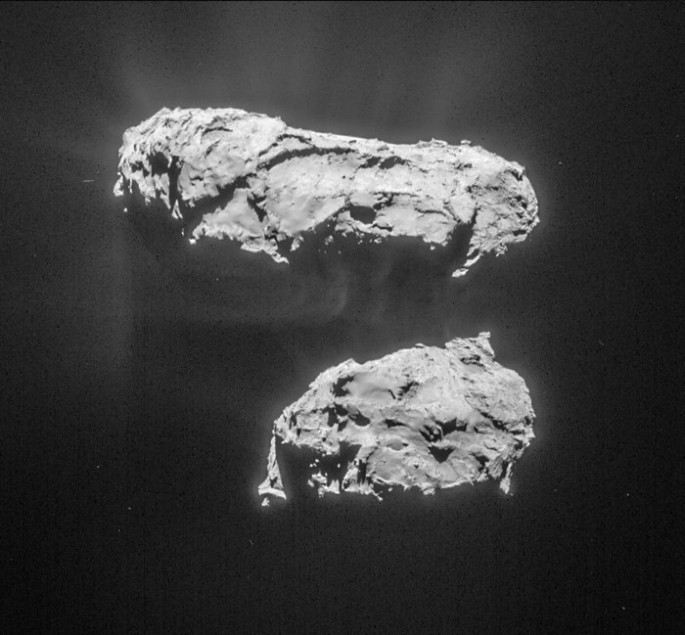The European Space Agency's Rosetta probe that is tailing comet 67P/Churyumov-Gerasimenko has apparently detected the first ever occurence of nitrogen from a comet.
Scientists believe that the comet orginated from the region of Pluto and Neptune's moon Triton as the presence of nitrogen is also present on these bodies. However, Rosetta probe's instruments have not yet detected any evidence of life producing gas on the comet itself or any probe on any comet for that matter.
According to lthe ead author of the study, Martin Rubin of the Physics Institute from the University of Bern, Germany, the comet's water ice can only trap relatively small amounts of nitrogen as remote sensing analysis from Rosetta's instruments are still not precise enough.
In order to detect nitrogen, the researchers measured the comet's gas emissions using Rosetta's onboard mass spectrometer called ROSINA (Rosetta Orbiter Spectrometer for Ion and Neutral Analysis).
Rubin adds that the ROSINA possesses the required resolution that can distinguish the molecules present on the comet with almost similar molecular weights for carbon monoxide and molecular nitrogen on the comet.
The team concludes that comet 67P/Churyumov-Gerasimenko was most likely created in the extremely freezing temepratures of the cold, outer solar system but it still does not prove that comets like these brought water and nitrogen to Earth.
According to study author Kathrin Altwegg of the University of Bern, the amount of molecular nitrogen that is brought to Earth by comets such as comet 67P is relatively small compared to other molecules that possess nitrogen such as ammonia.
The study team believes that their new findings lead to more evidence that comets such as comet 67P cannot be considered as a major source of water and nitrogen on Earth. The scientists also found out that the ratio of deuterium to the hydrogen found in the comet's water is also different from Earth's.
This study is publsihed in the journal, Science.



























